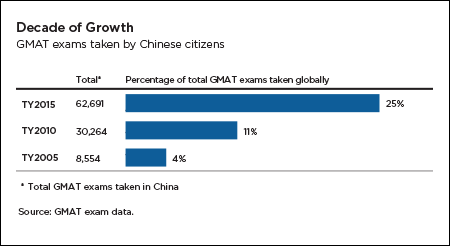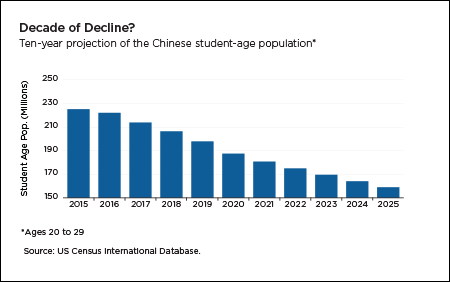Population projections offer insight into the future of the Chinese student pipeline.

Students from China have led the boom in international student mobility over the last two decades. In total, there are approximately 1 million international students enrolled in higher education in the United States, and nearly one in three of these students (31%) are Chinese.
Chinese examinees also have led the growth in the GMAT™ student pipeline. Of the 247,432 GMAT exams taken in testing year (TY) 2015, Chinese citizens accounted for 25 percent of all testing, completing a total of 62,691 exams. GMAT testing growth among Chinese citizens is up 107 percent since TY2010 and 633 percent since TY2005.

Will this growth continue?
Several factors are responsible for the increase in Chinese students pursuing higher education over the past decade. While some of these factors will likely continue into the near future such as rising incomes and greater higher education participation one key factor will not.
That factor is population growth. The traditional student age population for graduate management education—ages 20 to 29—is projected to decline in China by nearly 75 million people between 2015 and 2025. Although some of this will be offset by rising incomes and greater higher education participation, it will undoubtedly have a negative impact on the number of Chinese students entering global higher education. In fact, the China Statistical Yearbook already shows slowing or declining enrollments across national primary, secondary, and higher education institutions. The impact on global business schools could be significant, especially for specialized business master’s programs, which have relied heavily on interest from young Chinese students.

Are you interested in the demographic outlooks of other prospective student groups from around the world? GMAT™ accepting schools have complete access to nearly 160 GMAC Geographic Trend Reports on individual countries, detailing demographic information, GMAT exam performance and score-sending behavior, program interest, motivations, reservations, economic statistics, and student-age population projections.